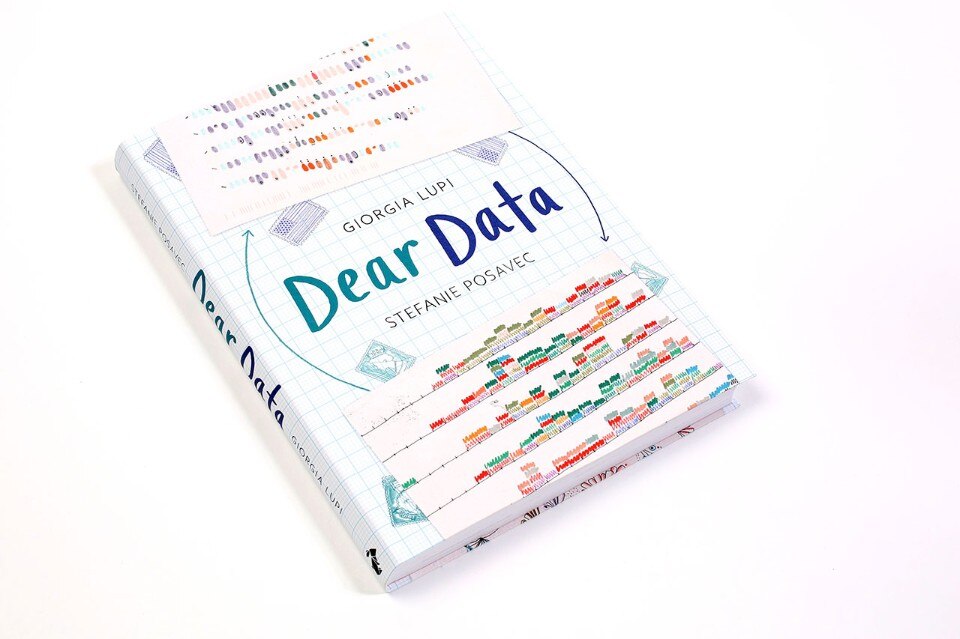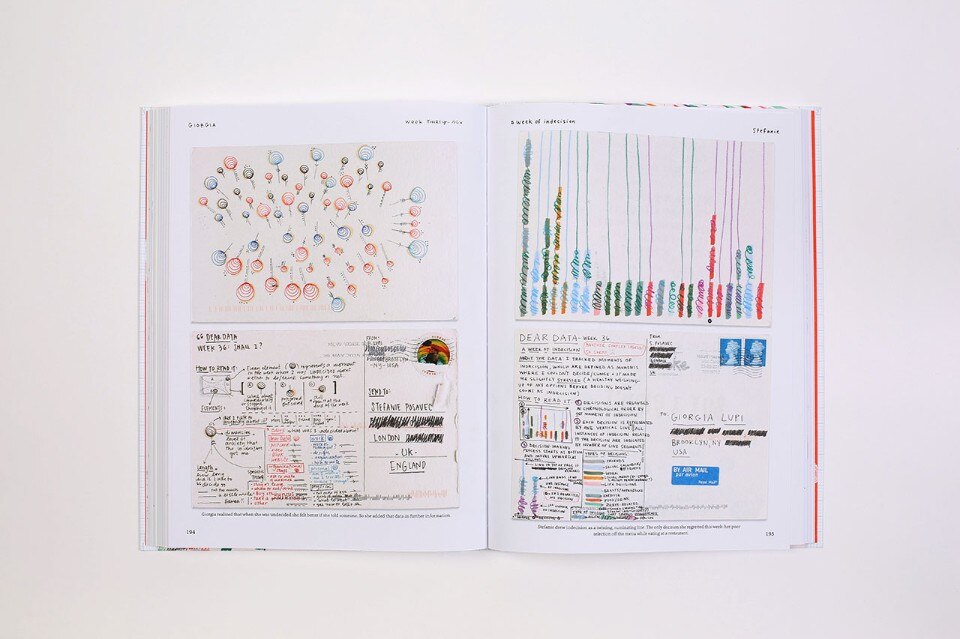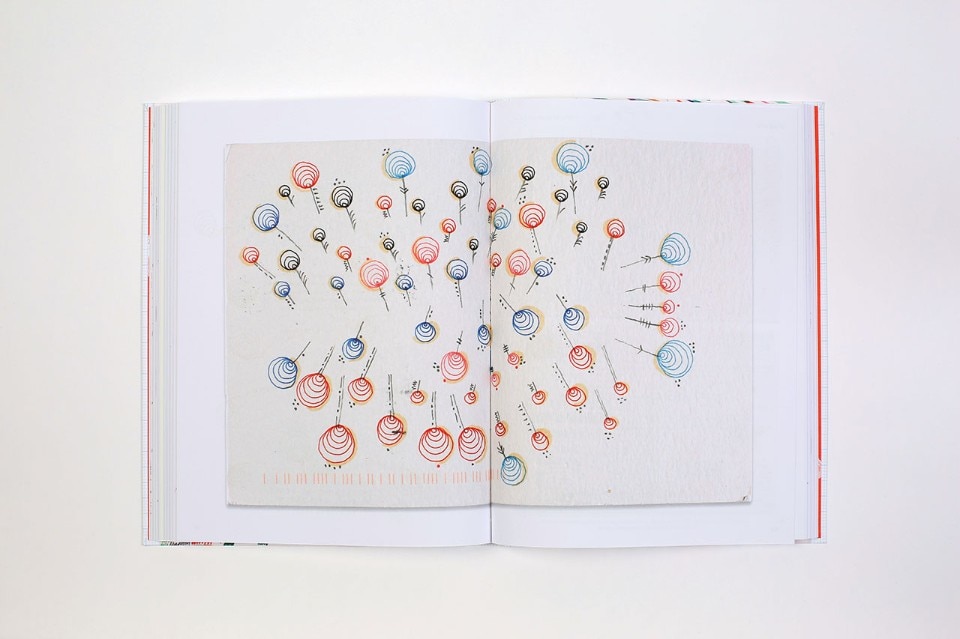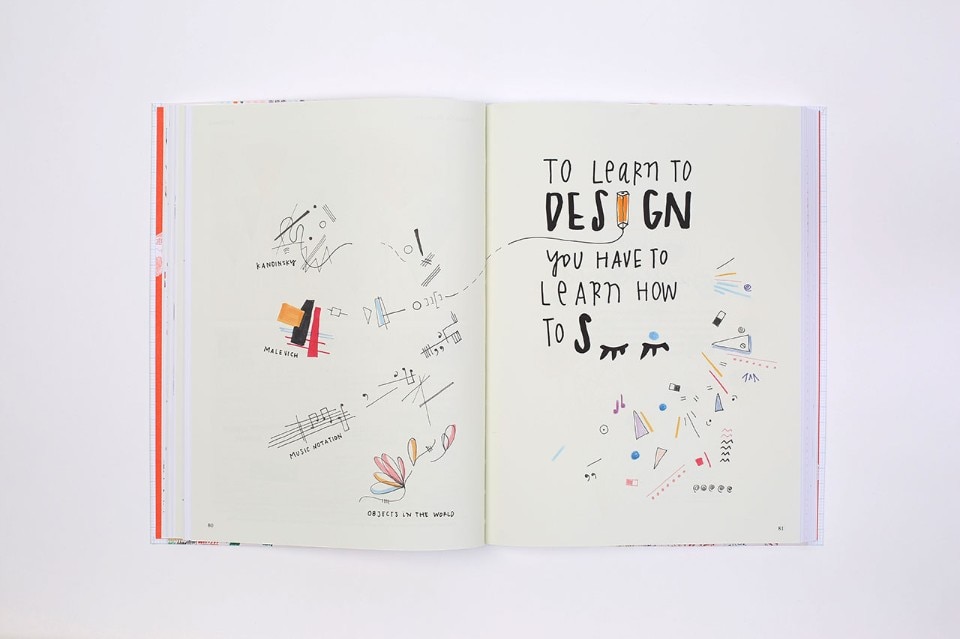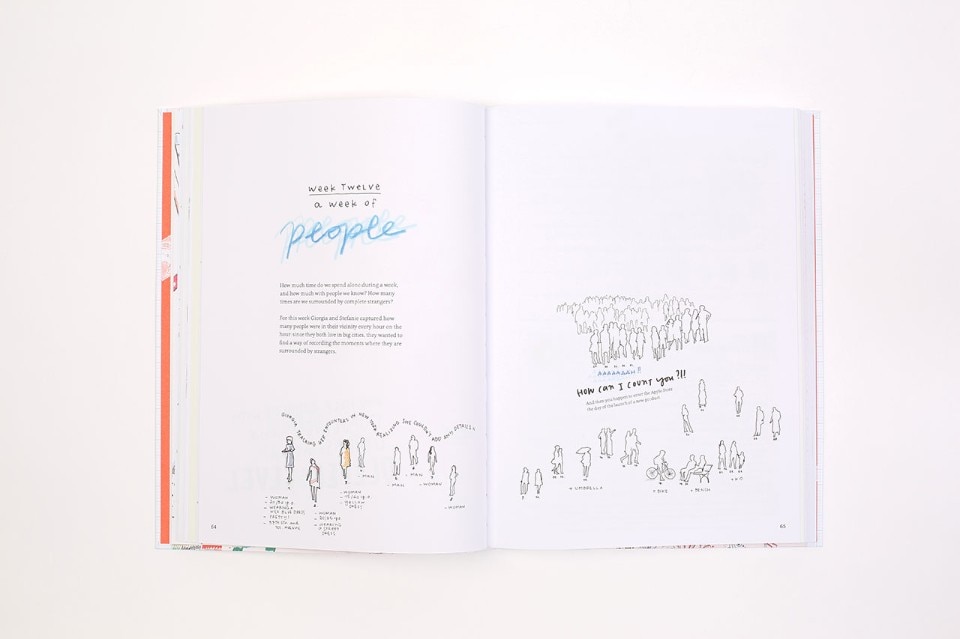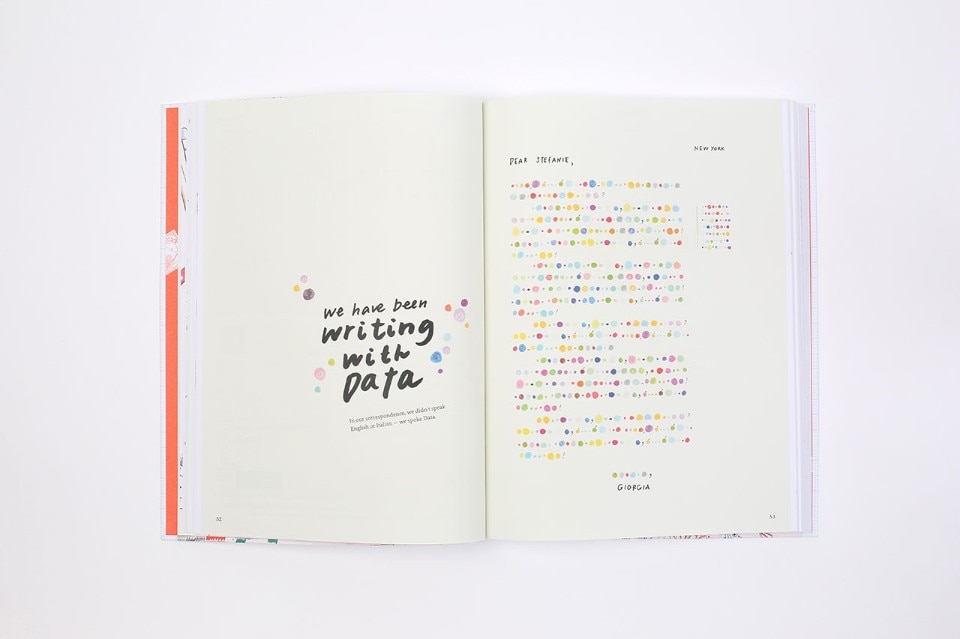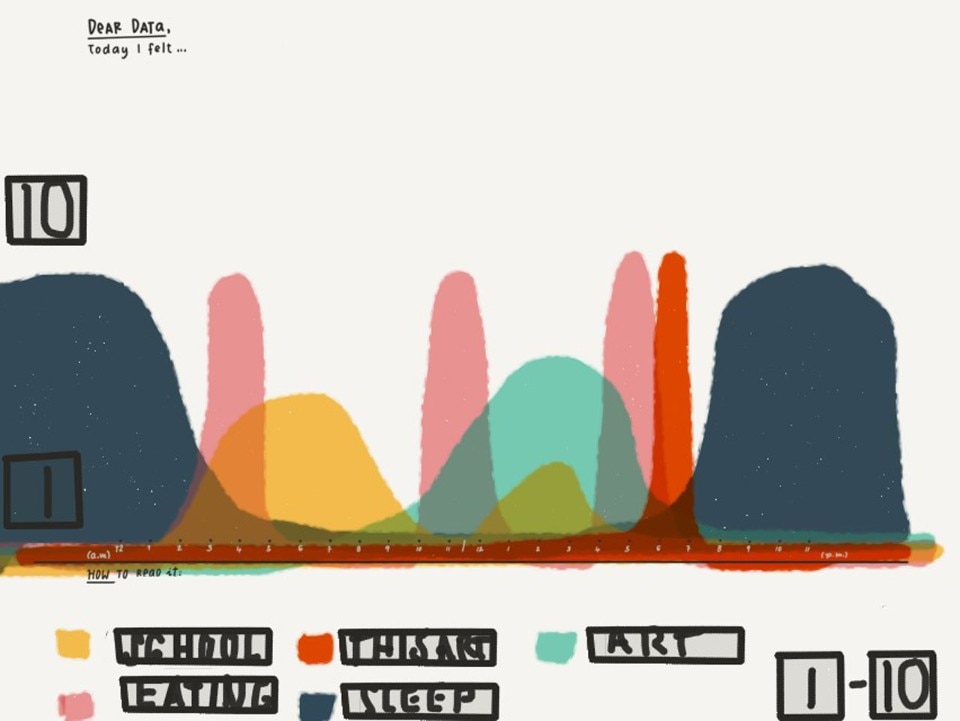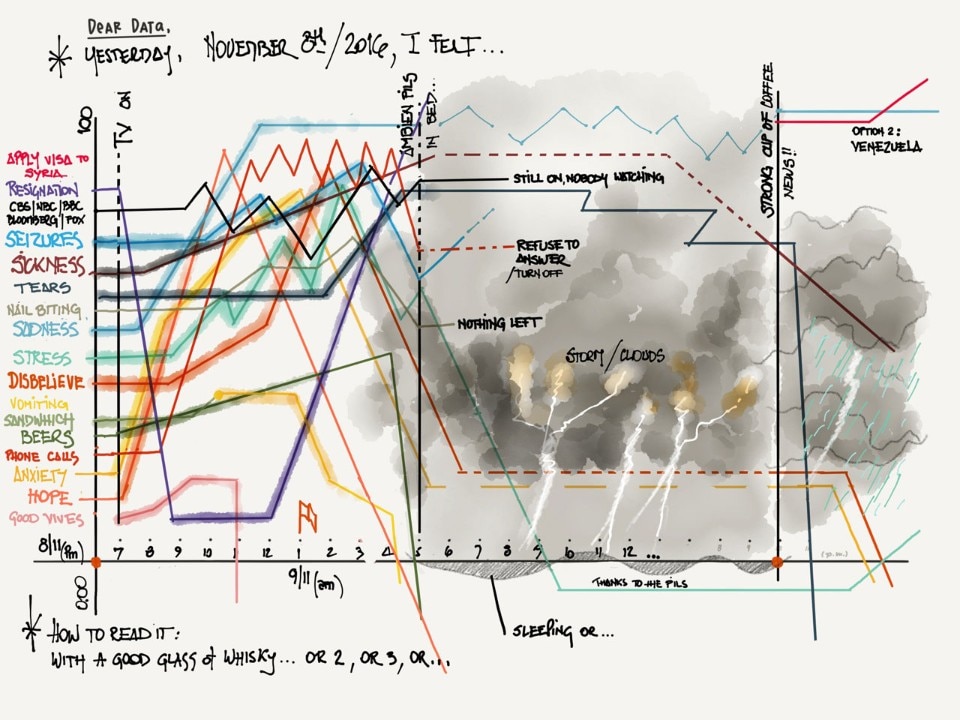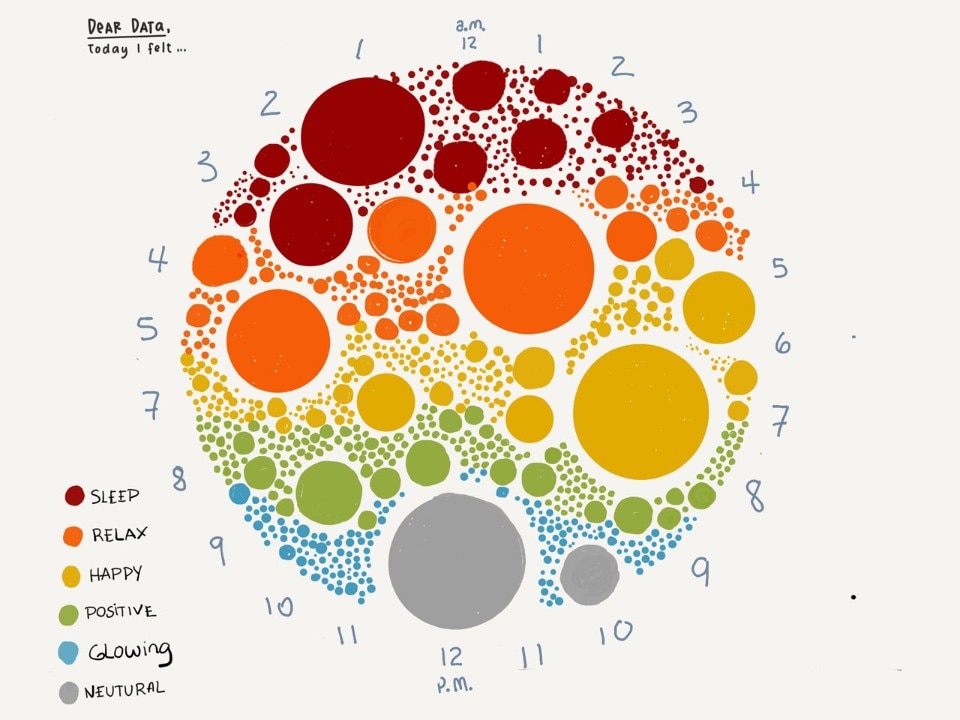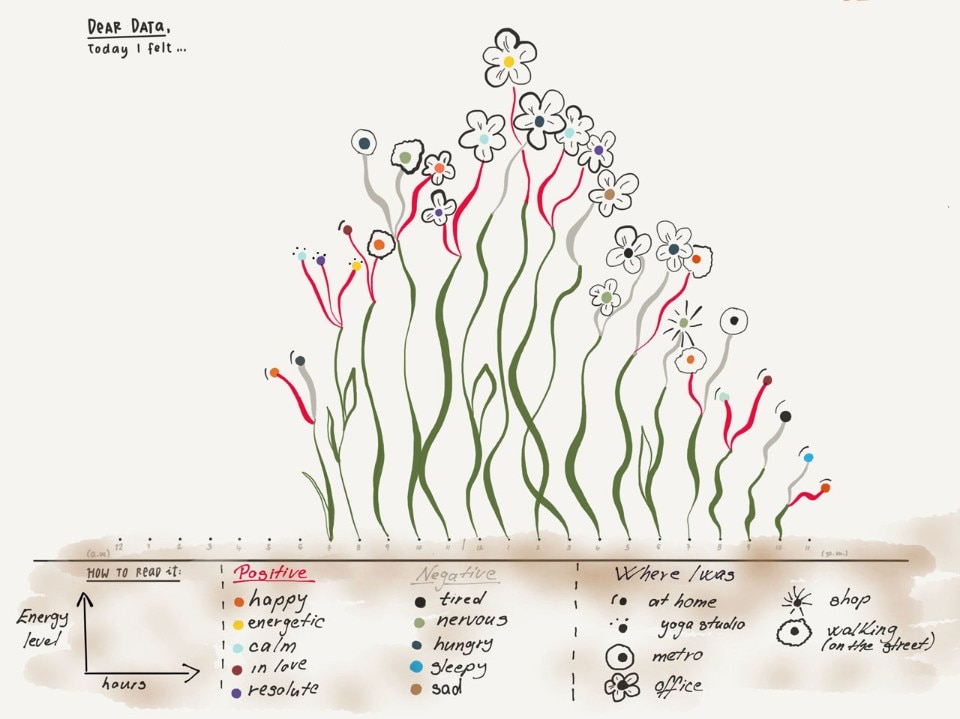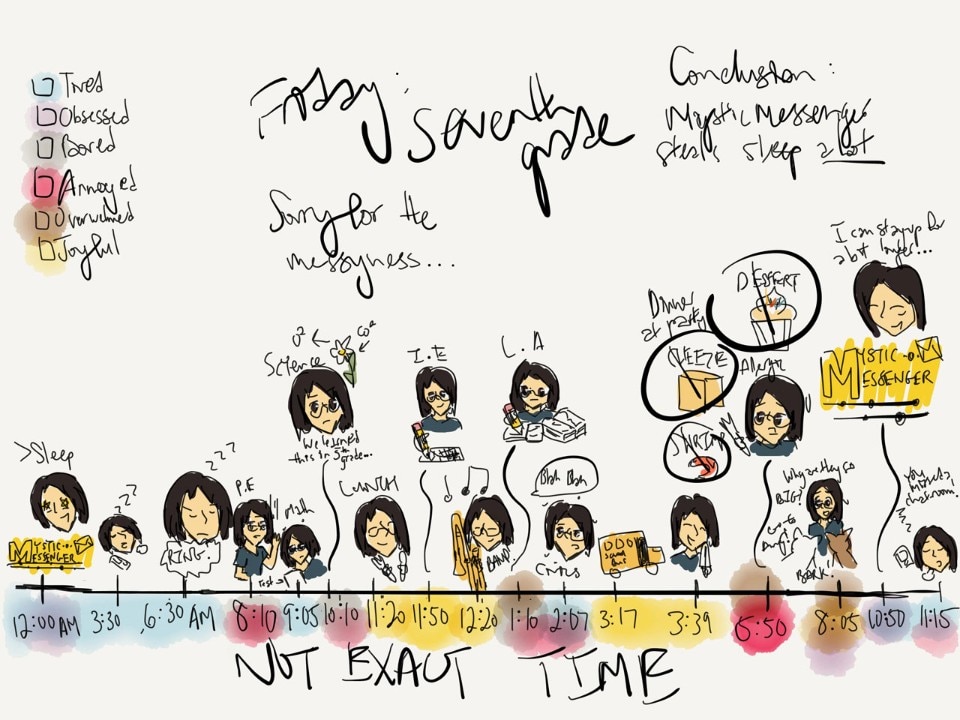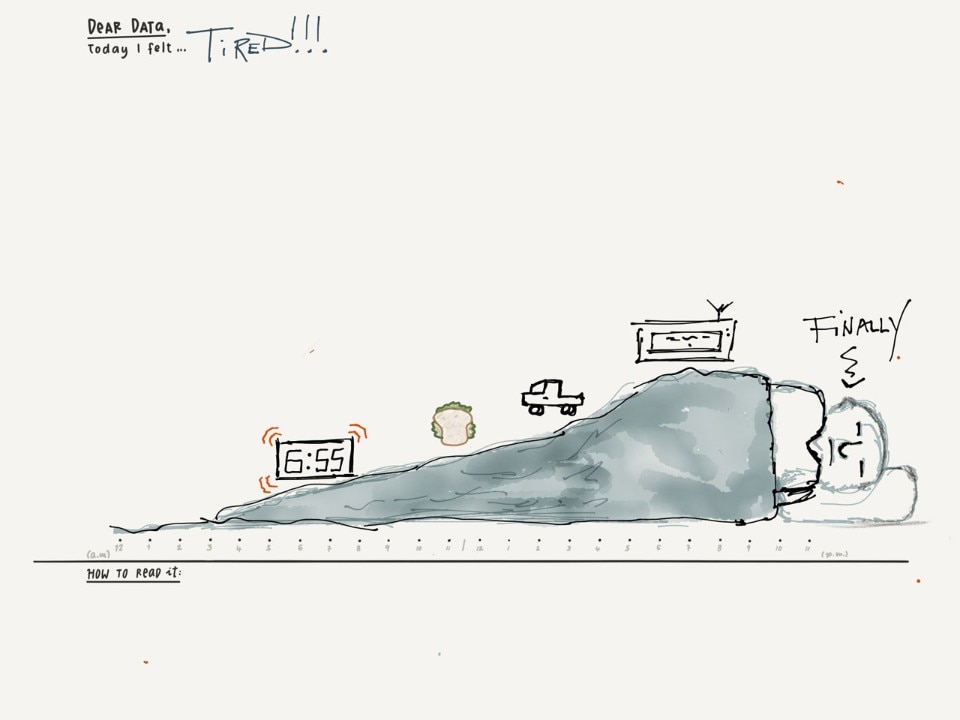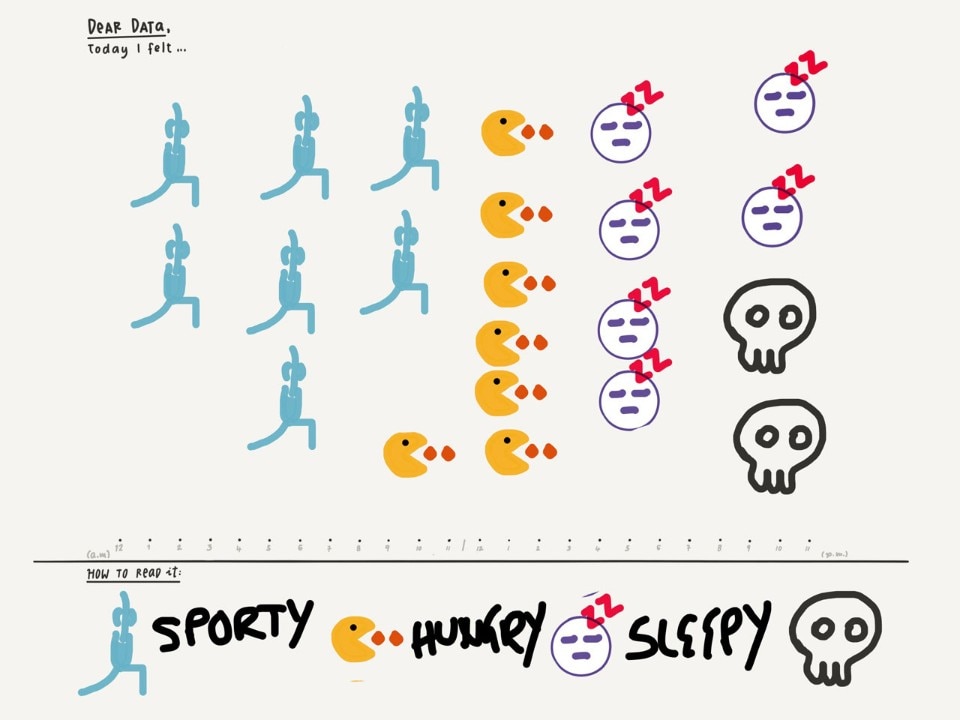Distracted, hurried, forgetful and incapable of slowing down to contemplate: this is how we tend to be, and technology is lending us a helping hand. Thanks to our smartphone, we can always feel “elsewhere”, engaged in conversations and relations far from what is at hand and in sight at the moment. The data registered by machines are making this process even more efficient. We are quicker to find what we are looking for and take less time to share photos and videos with our contacts. Yet precisely from these data comes a solution, a more attentive, almost contemplative way of looking at what happens to us on a daily basis.
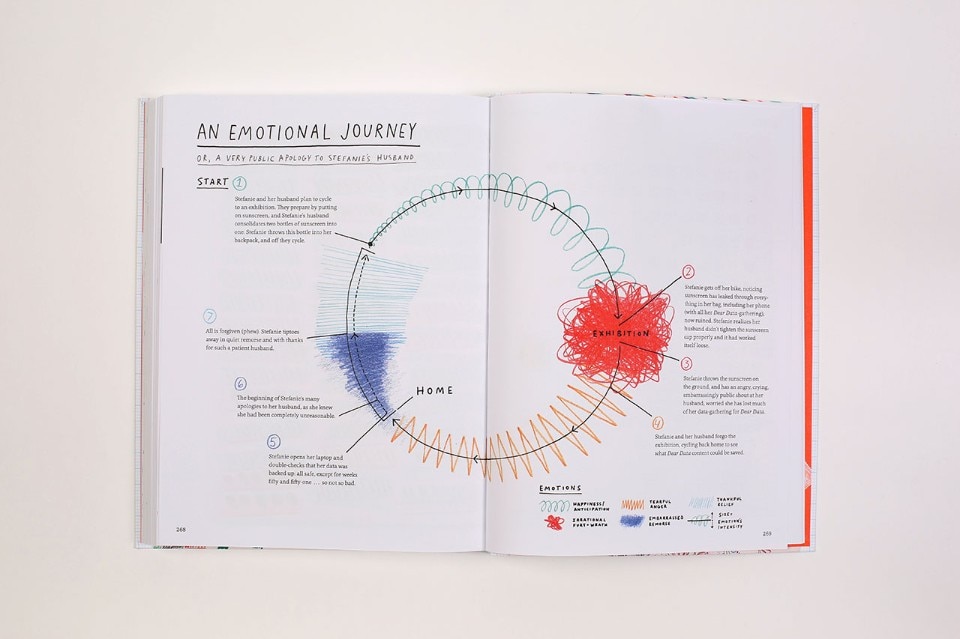
Stefania Garassini: You write that Dear Data was about using data to help you become more human and not more efficient. Was it easy to correspond with authentic and profound feelings through the entire project?
Giorgia Lupi + Stefanie Posavec: Usually, people associate the quantifiable and the quantitative with precision and objectivity. So the use of personal data is seen as a way to solve problems and find rational answers. We did not want to optimise our life; rather we were stimulated by the curiosity to discover the seemingly insignificant details of our days. We learned to look more carefully at our surroundings and the way we perceive them, week after week. Naturally, not everyone has the time to dedicate themselves to a project like ours, but over that year during which we monitored our relations, friendships and interactions, we were able to see for ourselves that data are not abstract entities, collected and processed by big institutions, but something very close to us that everyone possesses and can find in all aspects of their lives. They can help us understand ourselves better. Data are a raw material, a material we use to observe and document reality. Not using our computer for the Dear Data project forced us to find different ways of looking at data, and those ways gave us the excuse to say something about ourselves.
Stefania Garassini: What type of data did you collect and what were the criteria with which you chose them?
Giorgia Lupi + Stefanie Posavec: Every Sunday night, we would decide what to observe during the week. Before we started, we made a list of 52 possible themes that seemed suitable for the project, but once we began we realised that it was impossible to collect certain types of information. Over the months, we passed from an almost real-time collection of data to weeks during which we made a kind of partial inventory of objects used by both of us, in order to get to know each other better. We created graphic representations of our wardrobe, songs, books and so forth. Seeing that we know how collecting data on one’s own behaviour leads to change, we also introduced “performative” weeks during which we collected data on a certain activity in the hope that we could improve our attitude. For instance, we counted gestures of kindness, or smiles.
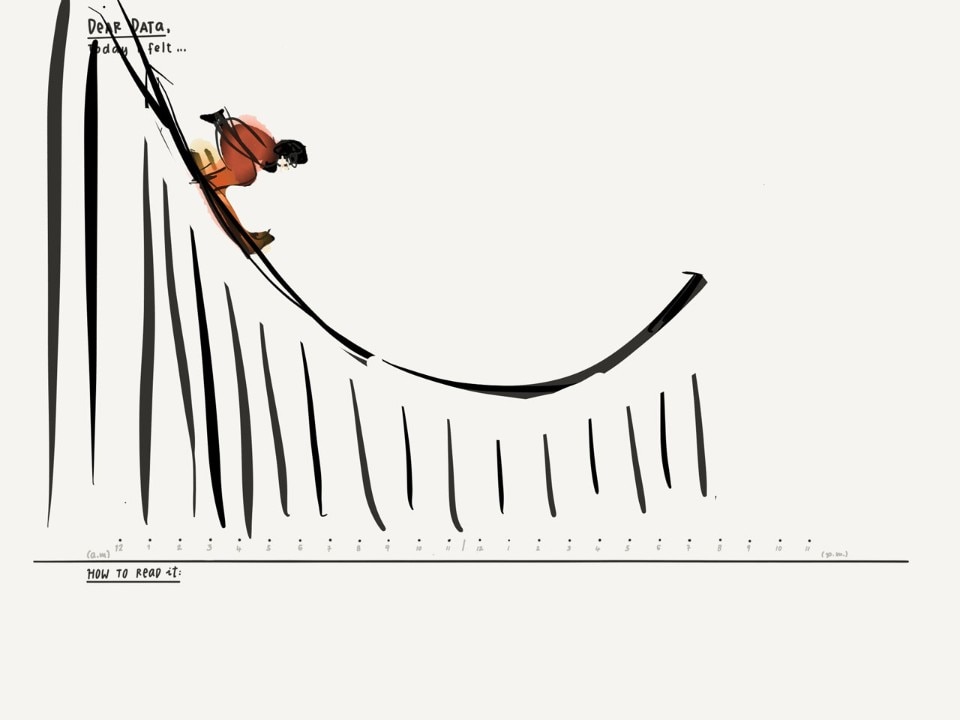
Stefania Garassini: Dear Data is now open to participation by users, particularly students and teachers. How is this phase of the project working out?
Giorgia Lupi + Stefanie Posavec: We are very satisfied with the circulation and participation that the project has seen. There are hundreds of people from all over the world with very diverse backgrounds who are experimenting with their own personal data and sharing the results with us. Teachers from all sorts of of schools use the Dear Data method to teach students how data function, and we have seen results of very high-quality graphics created by youngsters. We believe that working with data in an analog, personal way like we propose has given a non-specialised audience more familiarity with this field, bringing it closer to everyday life. Our intentions are to involve an increasing amount of people
Stefania Garassini: What did you learn during these months?
Giorgia Lupi + Stefanie Posavec: Dear Data has been the opportunity to conduct long-term research on a number of aspects of our life. Certain weeks were particularly enlightening, especially those concerning delicate aspects such as obsessions and fears, or more personal ones such as the relationship with our friends and husbands. Over the months, each of us composed a gradual “portrait” of the other through 52 small fragments of personality. It was possible to reconstruct lines of thought, habits and the particular way we dealt with situations. What we discovered every week was added to the idea we already had. But the primary lesson was definitely the importance of connecting with ourselves and our surroundings. Thanks to the project, we practised this. We learned how to be more attentive.


